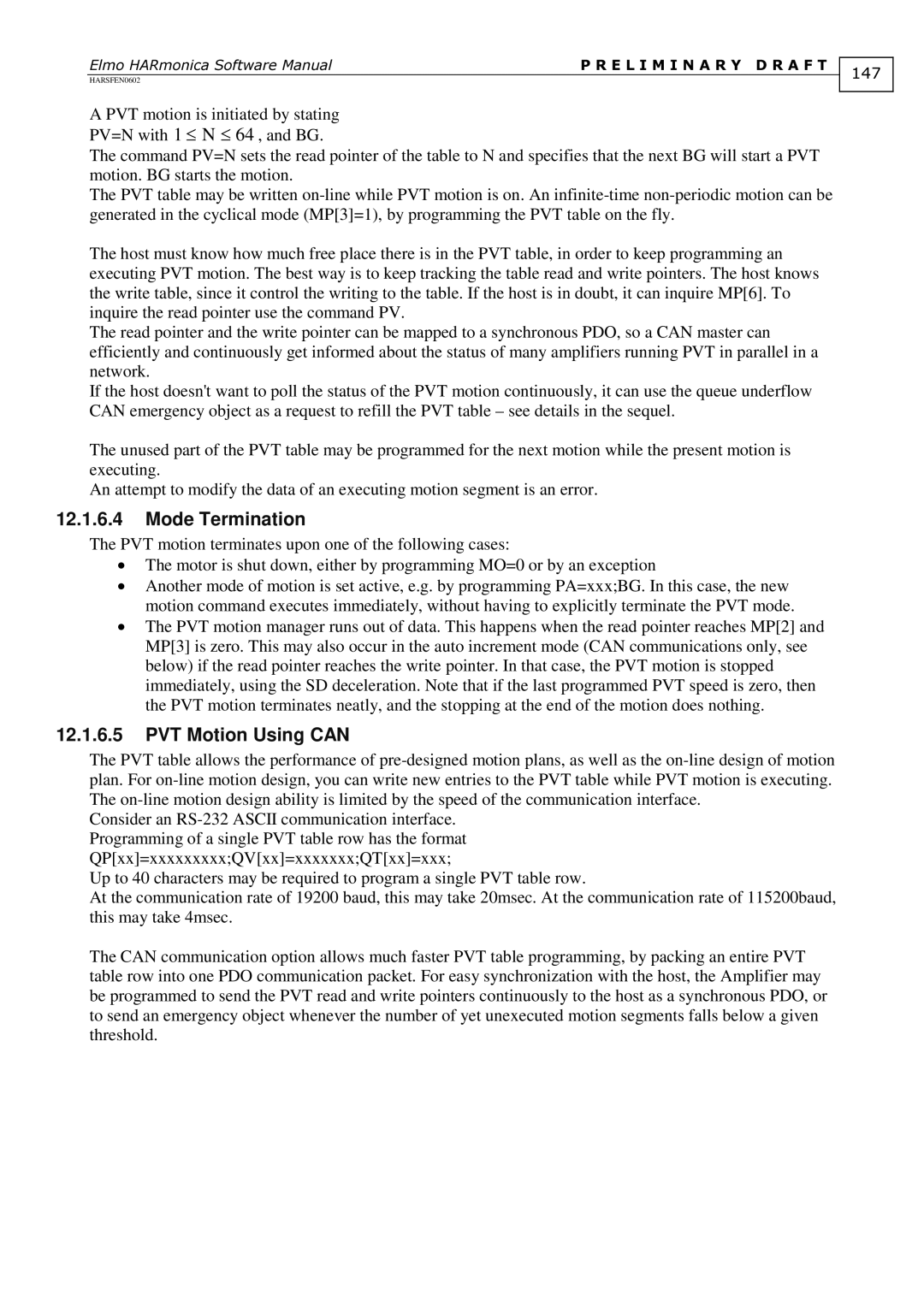ElmoHARSFEN0602HARmonicaSoftwareManual PRELIMINARYDRAFT
A PVT motion is initiated by stating PV=N with 1 N 64 , and BG.
The command PV=N sets the read pointer of the table to N and specifies that the next BG will start a PVT motion. BG starts the motion.
The PVT table may be written
The host must know how much free place there is in the PVT table, in order to keep programming an executing PVT motion. The best way is to keep tracking the table read and write pointers. The host knows the write table, since it control the writing to the table. If the host is in doubt, it can inquire MP[6]. To inquire the read pointer use the command PV.
The read pointer and the write pointer can be mapped to a synchronous PDO, so a CAN master can efficiently and continuously get informed about the status of many amplifiers running PVT in parallel in a network.
If the host doesn't want to poll the status of the PVT motion continuously, it can use the queue underflow CAN emergency object as a request to refill the PVT table – see details in the sequel.
The unused part of the PVT table may be programmed for the next motion while the present motion is executing.
An attempt to modify the data of an executing motion segment is an error.
12.1.6.4Mode Termination
The PVT motion terminates upon one of the following cases:
The motor is shut down, either by programming MO=0 or by an exception
Another mode of motion is set active, e.g. by programming PA=xxx;BG. In this case, the new
•motion command executes immediately, without having to explicitly terminate the PVT mode. The PVT motion manager runs out of data. This happens when the read pointer reaches MP[2] and MP[3] is zero. This may also occur in the auto increment mode (CAN communications only, see below) if the read pointer reaches the write pointer. In that case, the PVT motion is stopped immediately, using the SD deceleration. Note that if the last programmed PVT speed is zero, then the PVT motion terminates neatly, and the stopping at the end of the motion does nothing.
12.1.6.5PVT Motion Using CAN
The PVT table allows the performance of
Consider an
Up to 40 characters may be required to program a single PVT table row.
At the communication rate of 19200 baud, this may take 20msec. At the communication rate of 115200baud, this may take 4msec.
The CAN communication option allows much faster PVT table programming, by packing an entire PVT table row into one PDO communication packet. For easy synchronization with the host, the Amplifier may be programmed to send the PVT read and write pointers continuously to the host as a synchronous PDO, or to send an emergency object whenever the number of yet unexecuted motion segments falls below a given threshold.
